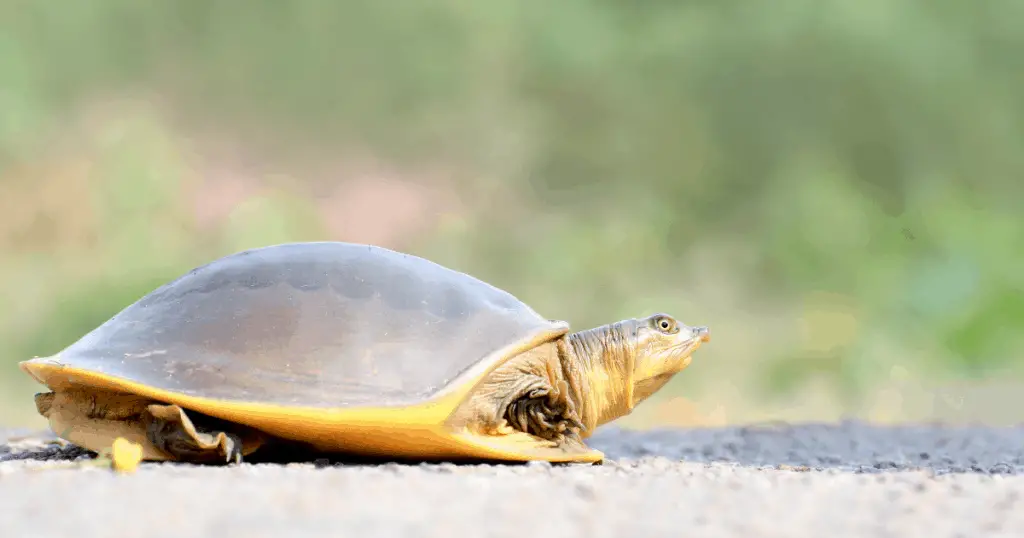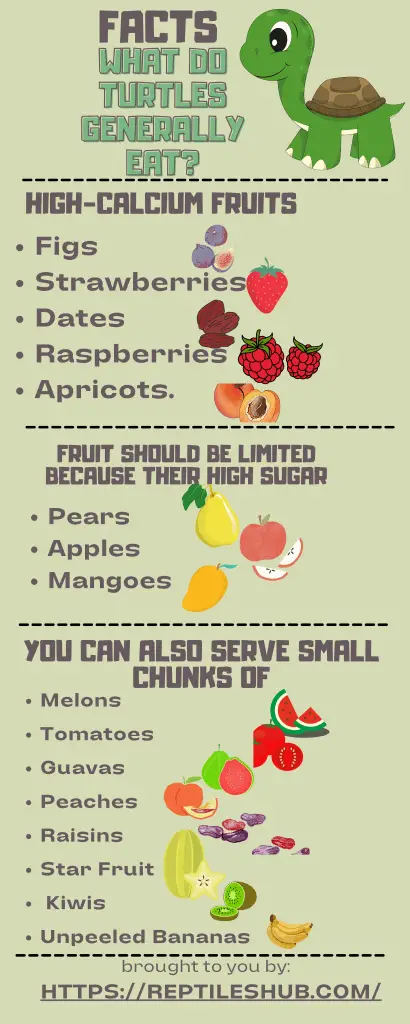Have you ever wondered what color turtles are? You might be surprised to know that turtles have various colors, patterns, and hues. From bright greens and blues to muted browns and blacks, turtles’ shells can be quite vivid. Moreover, some species even have the ability to change their hue depending on their mood or environment!
So, let’s dive in and explore why turtles come in various colors and patterns. Can they change color? What are environmental factors causing some turtles to lose their colorful pigmentation over time? You’ll also learn many other captivating facts about turtle shell coloring as we answer these questions!
The Different Colors of Turtles
Turtles come in various colors and patterns – depending on the species. Some have bright green shells with yellow stripes, while others have dark brown shells with red spots. Sea turtles often have blue-green or grayish hues, whereas box turtles tend to be darker with orange markings.
The key factor that determines turtle coloration is genetics. Each species has its own unique genetic code that dictates the type of pigmentation it will have. Additionally, certain environmental factors, such as temperature and light exposure, can also affect the color of a turtle’s shell. For example, some turtles will become darker in colder temperatures to absorb more sunlight for warmth.
Can Turtles Change Color?
In some cases, certain turtle species will be able to change their coloring depending on their mood or environment. For example, the box turtle can darken its shell in order to better blend into its surroundings. This helps it protect itself from predators and other threats.
Moreover, some turtle species can even change the pattern of their shells over time. This is often seen in turtles that live in particularly wet or dry environments, where the color changes are driven by the need to absorb or reflect more light.
Also, certain species, such as the red-eared slider and painted turtle, can actually change their coloration in response to emotion. This is often seen when they become frightened or agitated, with colors ranging from dark browns and blacks to bright yellows and oranges.
Sudden changes in color can also be caused by stress or illness. If a turtle feels sick or scared, it may become paler as its body releases hormones that cause it to lose pigmentation. This can indicate underlying health issues and should be addressed immediately by a vet if noticed.
What Gives Turtles Their Colors?

Well, the answer lies in natural selection. Evolutionary biologists believe that colors play an important role in the survival tactics of turtles, providing both protection from predators and an edge in reproduction.
For example, for species living in wetland environments where there is often a lot of greenery, darker greens and browns give them a natural advantage by blending into their surroundings. Meanwhile, bright coloring serves as warning signs that indicate potential danger — hence why brightly colored land tortoises sometimes have yellow and orange markings on their shells.
Some turtles even display rare hues, such as blue, due to the concentration of pigments like melanin or lipochrome. Others change color seasonally – like certain sea turtle species whose shell turns red during mating season!
Four Reasons Why Are Some Turtles Losing Their Color?
Turtles are known for their vibrant and colorful shells, but sometimes they can start to lose their color. This can be due to a variety of reasons, such as inadequate UV light, lack of adequate nutrition, contaminated water, and more.
1. Inadequate Uv Light
One of the main causes of turtle shell discoloration is inadequate UV light. Turtles need access to natural sunlight or artificial UV lighting in order to absorb the necessary vitamins that keep their shells healthy.
Without this exposure, turtles may start to experience fading or changing colors on their shells.
2. Lack of Adequate Nutrition
Another potential cause of turtle shell discoloration is the lack of adequate nutrition. Turtles require a balanced diet with plenty of protein, veggies, and occasional fruits in order to stay healthy and maintain their vibrant colors.
If they do not get enough nutrients from their diet, it can lead to fading or changing colors on their shells.
Also, Inadequate protein intake can also cause turtle shells to become discolored. Turtles need a balanced diet with plenty of lean proteins to stay healthy and maintain their vibrant colors. Without enough proteins in their diets, turtles may experience fading or changing colors on their shells.
3. Inadequate Veggies and Occasional Fruits
Turtles also require a variety of veggies and occasional fruits in order to stay healthy and maintain their vibrant colors. If they do not get enough nutrients from their diet, it can lead to fading or changing colors on their shells.
Without the right levels of vitamins, minerals, carbohydrates, and other vital nutrients, turtles may start to experience fading or changing colors on their shells.
You can check our favorite article about what turtles can eat

4. Contaminated Water
Finally, contaminated water can also be a factor in turtle shell discoloration. Hard water has high mineral content, which can deposit on the scutes and cause them to fade over time. It is important to ensure that your turtle’s water is clean and free from contaminants in order for them to stay healthy and maintain its vibrant colors.
Do Turtles’ Shells Change Color?
Absolutely, turtles’ shells can change color depending on the species and the environment. Many reptiles have the ability to adapt their colors for camouflage or warning signals.
Turtles are no different, with some species able to change from bright greens and yellows to mottled browns in order to blend into their environment.
In addition, some turtle shells can become lighter or darker depending on their age. Most turtles will lighten with age due to the natural wear of the scutes, while some species will darken as they mature.
Also, turtle shells can also turn white or black in certain cases. Sun damage from too much exposure to UVB rays is a common cause of white patches on turtle shells. Black patches or spots usually indicate an infection of the shell, which poor water conditions or an underlying health condition can cause.
Why Are the Turtles Shell Turning White?
As we have mentioned earlier, The most common reason a turtle’s shell turns white is that it lacks UVB exposure, which can impede its ability to synthesize carotenoids. These compounds give their shells their natural colors.
Turtles need UVB light to produce carotenoids, so they may look pale or white if they don’t have enough exposure. However, as long as they are provided with enough UVB lighting, their shells will gradually regain their normal color.
Why Are the Turtles’ Shells Turning Black?
As previously stated, While not as common as white-shelled turtles, some turtles can actually develop black shells due to an excess of carotenoid synthesis.
This usually happens when turtles are exposed to too much artificial UVB lighting or too much natural sunlight.
In such cases, the excess carotenoid production causes the turtle’s shell to darken until it becomes completely black in extreme cases.
Can Turtles from The Same Species Have Different Colors?
Absolutely! While there may be some differences in hue between individual turtles from the same species—such as lighter or darker shades of green—it is possible for two turtles of the same species to have totally different colored shells.
This occurs when one turtle has an abundance of carotenoid pigments while its counterpart has none at all; as a result, one may be darker than the other despite being of the same species.
List of Turtles with their Colors
| Turtle Species | Color |
|---|---|
| Common Snapping Turtle | Dark brown or black with yellow or orange spots on the shell |
| Loggerhead Turtle | Reddish-brown carapace and yellow plastron |
| Eastern Painted Turtle | Dark upper shell with red markings and yellow stripes on head and legs |
| Mekong Snail-Eating Turtle | Olive green to brown with yellow stripes on the head and limbs |
| Red-Eared Slider | Bright green with a yellow underside and red stripes behind the eyes |
| Green Sea Turtle | Olive green to black |
| Blanding’s Turtles | Gray or black with yellow spots on the head and neck |
| African Helmeted Turtles | Olive-green upper shell with yellow markings around edges |
| White-Lipped Mud Turtles | Light gray to brown carapace with darker lines or spots |
| Yellow-Blotched Map Turtles | Olive to dark brown with bright yellow blotches on shell |
| Eastern Box Turtles | Dark brown or black with orange or yellow markings on upper shell and limbs |
| Spotted Turtles | Small, mostly black with bright yellow spots on body and shell |
| Northern Giant Musk Turtles | Olive-green upper shell with darker lines or spots and pale streaks on head and neck |
| Red-Footed Tortoises | Tan to dark brown high-domed carapace |
| Indian Star Tortoises | High-domed carapace that can range from golden to almost black with radiating patterns of light and dark pigmentation resembling stars |
| Flowerback Box Turtles | Olive-brown upper shell with distinctive concentric rings of orange, pink, purple, white, or cream-colored pigmentations |
| Ringed Map Turtles | Olive to dark brown carapace patterned by thin light lines running across it like spokes on a wheel |
| Spotted Flapshell Turtles | Greyish-brown or mottled greyish-black with two rows of large round spots along either side of their back |
| Red-Bellied Short-Neck Turtles | Medium to dark brown above with red patches beneath each eye and around the chin area |
| Furrowed Wood Turtles | Dark grayish/olive colored above with distinctive ridges along both sides of the carapace |
| Hilaire’s Toadhead Turtle | Grayish/olive colored above with distinctive bumps along both sides of the head |
| Bowsprit Tortoises | Overall orange to golden hue above |
| Pink Bellied Side Neck turtles | Mostly grayish/olive colored above with distinctive pink patches beneath each eye |
| Indian Roofed turtles | Mostly grayish/olive colored above with distinctive raised scales along both sides of the head |
| Pancake Tortoises | Overall golden hue above |
| Western Painted turtles | Mostly olive colored above with distinctive red stripes along both sides of the head |
| Red Cheeked Mud turtles | Mostly grayish/olive colored above with distinctive red patches beneath each eye |
| African Dwarf Mud Turtle | Grayish brown to tan with darker patches |
| Yellow-Margined Box Turtle | Tan or light gray with orange or yellow lines |
| Spiny Turtle | Light gray to tan with darker patches and spines on the neck and legs |
| Razor-Backed Musk Turtle | grey-brown in color, with black spotting |
| Texas Map Turtle | olive green with yellow reticulations |
| Ryukyu Black-Breasted Leaf Turtle | Black or dark gray with white stripes on the head and neck |
| Amazon Toad-Headed Turtle | Tan or light gray with bright orange or yellow lines |
FAQ
What Is the Rarest Turtle Color?
The rarest turtle color is a vibrant golden-red known as albino. A lack of the pigment melanin causes this color and usually only occurs in certain species like skinner’s box turtles or red-footed tortoises. Also, a yellow and black pattern is quite rare in sea turtles. It is a bright yellow with dramatic black stripes, spots, or lines.
Why Is the Fat of Green Turtle Green in Color?
The green turtle, also known as the green sea turtle, is found in tropical and subtropical seas worldwide. Despite its name, the green sea turtle does not derive its name from any particular external coloration of the turtle. Instead, it is named for its fat’s greenish color, which lies between its inner organs and shell.
This green-colored fat is mostly due to the sort of vegetation that they feed on. The diet of this species varies as they age; young ones are usually carnivorous and generally feed on worms, fish eggs, jellyfish, algae, etc., but as they mature, they become herbivores and feed on seagrasses or algae.
What Kind of Turtle Has an Orange Belly?
The Red-Eared Slider (Trachemys scripta elegans) is a freshwater turtle that has an orange or red stripe behind each eye, and its belly is typically olive to brown in color with yellow stripes. It is native to the Midwestern United States to northern Mexico but has become established in other places due to pet releases. It is also known for being intelligent and can learn to recognize its owners.




Leave a Reply